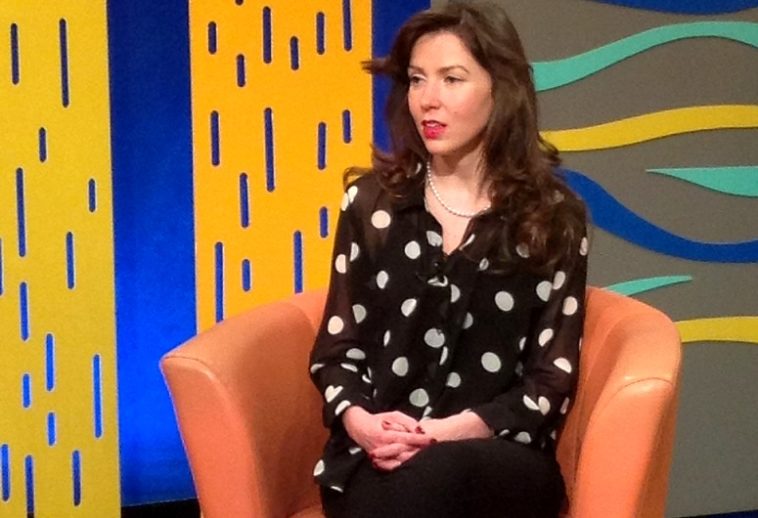Growing up in an oppressive, communist country where limited investment was allocated for high-end medical devices or biomedical research, Adina Laura Achim received only inaccurate treatments for white patches on her skin. After the fall of communism in Romania, she traveled to France for treatment where she was diagnosed with vitiligo. With no effective treatment, she was left battling social stigmatization, prejudice and endless bullying attempts from other kids.
Adina was just eight years old when she noticed a small white patch on her hand. The spot expanded rapidly, and by the time she was 13, large parts of her body were covered in vitiligo. She recalls, “When I turned 16, my hair started whitening prematurely. A couple of months later, the eyelashes and eyebrow on the right side started losing pigment too until they turned white.” Nowadays, the large patches are apparent on Adina’s elbows, face, hands, arms, fingers, and legs.
“In school, children nicknamed Adina the Dalmatian, Pongo, and the spotted cow. On various occasions, parents didn’t let their kids interact with her because they feared that her condition was contagious, and it could get everyone sick. There were occasions when various individuals pointed at her vitiligo spots and looked disgusted or fearful. She even had a boyfriend who told her that her skin looked burned. Thus she should cover her unattractive legs and hands up. Otherwise, she could scare people off.
As Adina had no control over her skin and the speed with which the disease was spreading, she became increasingly conscious about how she looked, turning her attention towards her wardrobe. She pours her heart out, “My garments had become protective shields against the outside world as they hid my skin and white spots. For decades, I felt that if my look was well-curated; people will focus on my dresses instead of my arms, legs or face. I became obsessive when it came to my personal look. This meant no creases, worn-out fabrics or even styles that could pass as last season because in my mind a less than perfect personal style meant giving people the power to focus on my skin instead of my attire and I already felt powerless due to vitiligo.”
It’s surprising that in the digital age when we have rapid advances in technology; people are still largely misinformed about vitiligo. Adina grew tired of explaining her spots just to see the same reaction of mistrust and fear over and over again. As an adult, things became easier for Adina, and she became more confident and thick-skinned. However, it took her almost twenty years until she made peace with her skin condition. Adina tells us why “The fact that my skin looked different made me act and think differently too. It took years until I felt confident enough to wear skirts and dresses that would show my bare legs. Thanks to my parents and close friends, I’ve built a strong support system.”
Today, Adina just ignores the rude comments and questions, feeling confident in her skin. Now, she sees herself as a beautiful young woman. But this adjustment came because of a change in her mindset. Now, beauty for Adina has more to do with character, personal values, and personality than pigmentation or flawless skin. She shares, “Currently, vitiligo does not fall into the problems category anymore. Vitiligo gives me something that sets me apart from the masses, and to a greater extent now I understand why my mom used to call me a unicorn.” Adina has a white spot on her forehead.
Apart from being called a UN Women’s Empower Women Champion for Change (2016-2017), Adina has been lauded for her political engagement and humanitarian activism. Her name is broadly associated with non-profits that fight against human trafficking, work into pediatric cancer research and stand for the rights of the refugees and Asylum seekers.
With eight books published in three languages and her byline on numerous articles and reviews, Adina is happy to be living the life of a modern storyteller while remaining faithful to her own values and quest for authenticity.
After leaving her native country, Romania, Adina has lived across Europe, the USA, and Africa. She has worked for years in several corporate positions in the public relations and marketing departments. After leaving behind a stable career in public relations, Adina decided to pursue a career in luxury retail and lifestyle journalism. Today, her work appears in some of the world’s most important lifestyle publications, including L’Officiel, Cosmopolitan, Buro 24/7, Grazia, Society Magazine, Fashion TV, and ZINK Magazine. Her editorial work has been translated into English, Spanish, Slovene, Bulgarian, Armenian, and Russian.
Adina is currently participating as an author in an extraordinary book project which tackles the challenges of migration. We wish her the best of luck in all of your future endeavors.

